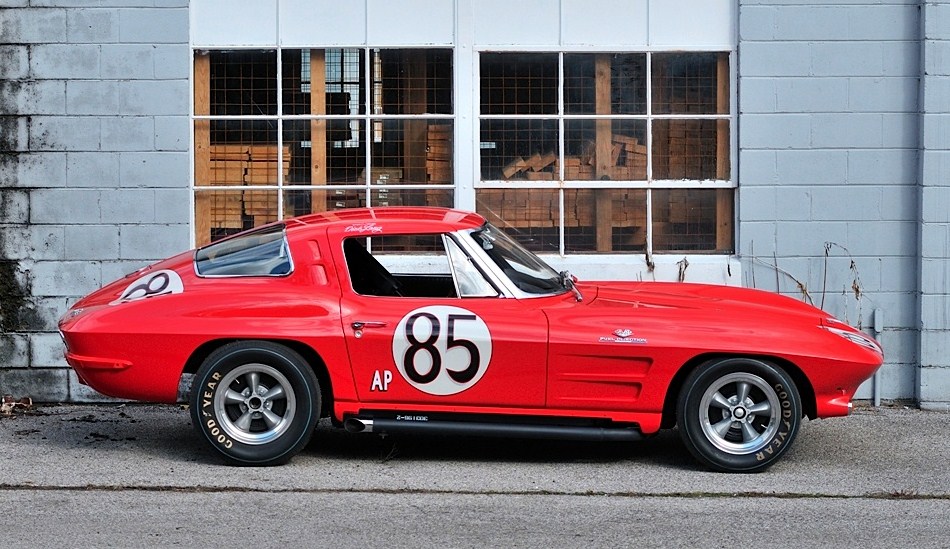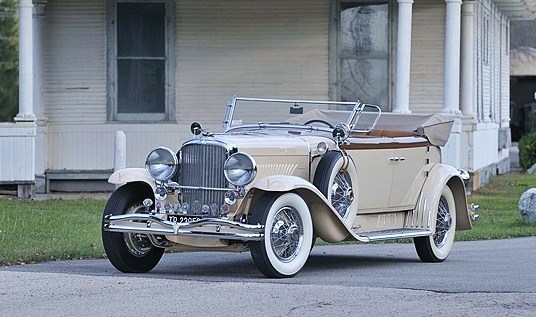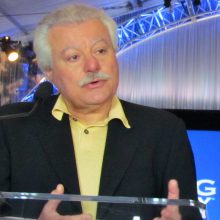Overlooked amid the excitement about cars selling for millions of dollars at the recent Arizona classic car auctions was the news that you could buy cars at those same sales not for six or even five figures but for as little as $1,100, which is what it cost someone to buy a 1981 cadillac Seville sedan at Barrett-Jackson.
At Russo and Steele, a 1968 Volkswagen Karmann Ghia coupe sold for $1,650. A 1995 Oldsmobile Vista Cruiser station wagon went for $1,674 at the Silver Auction.
O.K., there were no four-figure cars at Bonhams, RM or Gooding & Company, but a 1949 Crosley Hotshot roadster did sell at Bonhams for $13,200, a 1966 NSU Spider went for $24,200 at RM, and a 1960 Triumph TR3 brought $29,700 at Gooding.
Thanks to the fact that Hagerty Insurance stations someone at each auction venue to track every sale, we can share news of the least-expensive vehicles sold at each event. In fact, if you scroll down the page you can see the 10 least-expensive cars sold at each auction… but wait!
Don’t scroll down just yet, because we also asked Hagerty to provide a list of the cars at each auction that sold for an amount closest to the average sale price, and for good measure the company provided median sales figures and vehicles.
The average sales price at the six Arizona auctions was $107,024, great news for consignors and for the auction companies, perhaps not so great news for grassroots classic car collectors and especially for those just trying to get into the hobby.
What might that average price have bought you at the Arizona auctions? Well, a 1966 Lotus Cortina Mk I coupe went for $107,250 at Gooding and a 1970 Oldsmobile 4-4-2 W-30 hardtop coupe went for $106,700 at Barrett-Jackson.
However, average prices are skewed by those multi-million-dollar sales, so it can be instructive and enlightening — and even heartening — to look at median sales prices, the price point that separates the most expensive 50 percent of cars sold from the least expensive 50 percent.
At the Arizona auctions, 2,234 cars were sold. The median price paid was $44,000, which means somewhere around 1,100 cars cost more than $44,000 but the other 1,100 or so cost less than that amount.
For example, while the average price paid at Barrett-Jackson was $78,087, the median transaction was $49,500. Or consider Bonhams, where the average was $272,890 but the median was just $88,000.
To put this in the perspective of sensible sheetmetal instead of dollars and cents, here are some of the cars you could buy for precisely that $44,000 media price:
- a 1964 Chevrolet Impala SS 409 hardtop coupe at Barrett-Jackson,
- a 1958 Oldsmobile Dynamic 88 J-2 hardtop coupe at Russo and Steele,
- a 1966 Ford Bronco at Russo and Steele,
- a 1959 MGA roadster at Gooding,
- a 1978 Maserati Merak SS coupe at RM.
10 Least-expensive cars sold
figures provided by Hagerty Insurance
OVERALL
- 1981 Cadillac Seville Sedan sold for $1,100 (Barrett-Jackson)
- 1968 Volkswagen Karmann Ghia Coupe sold for $1,650 (Russo and Steele)
- 1995 Oldsmobile Vista Cruiser Station Wagon sold for $1,674 (Silver)
- 1980 Chevrolet Corvette Coupe sold for $1,925 (Russo and Steele)
- 1999 Land Rover Discovery SII Sport Utility sold for $2,052 (Silver)
- 1968 Ford Crew Cab Short Bed Pickup sold for $2,200 (Russo and Steele)
- 1981 Alfa Romeo GTV-6 Coupe sold for $2,200 (Russo and Steele)
- 2005 Chrysler Sebring sold for $2,268 (Silver)
- 1973 Chevrolet Cheyenne Super 20 Pickup sold for $2,376 (Silver)
- 1995 Volvo 945 Station Wagon sold for $2,376 (Silver)
BY AUCTION
Barrett-Jackson
- 1981 Cadillac Seville Sedan sold for $1,100
- 1987 Toyota Custom Convertible Pickup sold for $2,750
- 1969 Toyota Corona GT Sedan sold for $3,850
- 1966 Dodge A100 Van sold for $4,290
- 1957 Cushman Golf Cart sold for $4,290
- 1982 Toyota Custom Pickup sold for $4,620
- 1955 Reo M36 C Military 6X6 sold for $5,225
- 2001 Chevrolet S-10 Custom Pickup sold for $5,500
- 1977 Chevrolet Monte Carlo Landau Coupe sold for $5,500
- 1966 Volkswagen Beetle Custom Sedan sold for $5,500
Russo and Steele
- 1968 Volkswagen Karmann Ghia Coupe sold for $1,650
- 1980 Chevrolet Corvette Coupe sold for $1,925
- 1968 Ford Crew Cab Short Bed Pickup sold for $2,200
- 1981 Alfa Romeo GTV-6 Coupe sold for $2,200
- 1978 GMC Sierra Grande Short Box Pickup sold for $2,750
- 1978 Chevrolet C-10 Pickup sold for $2,860
- 1960 Pontiac Bonneville Hardtop Sedan sold for $3,080
- 1984 Mercedes-Benz 280SL Convertible sold for $3,520
- 1991 Jaguar XJS Coupe sold for $3,850
- 1981 Mercedes-Benz 380SL Convertible sold for $3,850
RM Auctions
- 1966 NSU Spider sold for $24,200
- 1957 BMW Isetta 300 Micro Car sold for $30,250
- 1959 Imperial Southampton Coupe sold for $33,000
- 1959 Autobianchi Bianchina Transformabile SII Coupe sold for $33,000
- 1952 Harley-Davidson FL Sport Solo Motorcycle sold for $38,500
- 1957 BMW Isetta 300 Micro Car sold for $38,500
- 1978 Maserati Merak SS Coupe sold for $44,000
- 1962 Rolls-Royce Silver Cloud II Limousine sold for $44,000
- 1967 Fiat Abarth 1000TC Berlina Corsa sold for $46,750
- 1950 Hudson Commodore Eight Convertible sold for $46,750
Gooding & Company
- 1960 Triumph TR3 Roadster sold for $29,700
- 1955 MG TF 1500 Roadster sold for $34,100
- 1976 Triumph TR6 Convertible sold for $35,200
- 1957 BMW Isetta 300 Micro Car sold for $37,400
- 1941 Cadillac Series 60 Special Sedan sold for $40,700
- 1957 MGA 1500 Roadster $41,800
- 1928 Ford Model A Sedan Delivery sold for $41,800
- 1952 Hudson Wasp Twin H Coupe sold for $41,800
- 1983 Toyota Land Cruiser FJ40 Sport Utility sold for $41,800
- 1959 MGA Roadster sold for $44,000
Bonhams
- 1949 Crosley Hotshot Roadster sold for $13,200
- 1964 Fiat 2300S Coupe sold for $16,500
- 1968 Bentley T1 Sedan sold for $17,600
- 1948 Fiat 500B Topolino Cabriolet sold for $18,700
- 1951 MG TD Roadster sold for $20,900
- 1931 Chevrolet Coupe sold for $22,000
- 1967 Simca 1000 Coupe sold for $24,200
- 1960 MGA 1600 Roadster sold for $24,200
- 1960 Austin-Healey Sprite Bugeye Roadster sold for $26,400
- 1958 Morgan Plus 4 Roadster sold for $30,800
Silver
- 1995 Oldsmobile Vista Cruiser Station Wagon sold for $1,674
- 1999 Land Rover Discovery SII Sport Utility sold for $2,052
- 2005 Chrysler Sebring sold for $2,268
- 1973 Chevrolet Cheyenne Super 20 Pickup sold for $2,376
- 1995 Volvo 945 Station Wagon sold for $2,376
- 1976 Cadillac Seville Sedan sold for $2,376
- 1974 Mercedes-Benz 450SL Convertible sold for $2,700
- 1996 Cadillac Seville Sedan sold for $2,808
- 2002 Chrysler Sebring sold for $3,024
- 1997 Ford Mustang GT Convertible sold for $3,024
Cars bracketing average sold price
OVERALL
One up: 1966 Lotus Cortina Mk I Coupe sold for $107,250 (Gooding)
Average = $107,024
One down: 1970 Oldsmobile 4-4-2 W-30 Hardtop Coupe sold for $106,700 (Barrett-Jackson
BY AUCTION
Barrett-Jackson
One up: 1965 Chevrolet Corvette 327/365 Convertible sold for $78,100
Average = $78,087
One down: 1953 Packard Caribbean Convertible sold for $77,000
Russo and Steele
One up: 1970 Ford Mustang Boss 302 Sportsroof Coupe sold for $42,350
Average = $41,824
One down: 1999 Dodge Viper GTS Coupe sold for $41,800
RM Auctions
One up: 1956 Talbot-Lago T14 LS Coupe sold for $423,500
Average = $421,884
One down: 1933 Packard Twelve Coupe Roadster sold for $418,000
Gooding & Company
One up: 1942 Chrysler Windsor Town & Country Barrelback Woody Station Wagon sold for $462,000
Average = $449,650
One down: 1957 Porsche 356A Speedster sold for $445,500
Bonhams
One up: 1932 Marmon V16 Victoria Coupe sold for $275,000
Average = $272,890
One down: 1929 Stutz Model M Monte Carlo Sedan sold for $264,000
Silver
One up: 2001 Chevrolet Corvette Convertible sold for $17,820
Average = $17,414
One down: 1976 Mercedes-Benz 280SL Convertible sold for $17,280
Cars bracketing median sold price
OVERALL
One up: 1964 Chevrolet Impala SS 409/360 Hardtop Coupe sold for $44,000 (Barrett-Jackson)
Median = $44,000
One down: 1958 Oldsmobile Dynamic 88 J-2 Hardtop Coupe sold for $44,000 (Russo and Steele)
BY AUCTION
Barrett-Jackson
One up: 1966 Ford Mustang GT 289/271 Convertible sold for $49,500
Median = $49,500
One down: 1970 Plymouth Cuda 383/335 Hardtop Coupe sold for $49,500
Russo and Steele
One up: 1971 Chevrolet C10 Stepside Pickup sold for $29,700
Median = $29,700
One down: 1955 Ford Thunderbird Convertible sold for $29,700
RM Auctions
One up: 1970 Mercedes-Benz 280SL Convertible sold for $165,000
Median = $165,000
One down: 1930 Packard Speedster Eight Runabout sold for $165,000
Gooding & Company
One up: 1971 Mercedes-Benz 280SL Convertible sold for $143,000
Median = $143,000
One down: 1968 Porsche 911L Coupe sold for $143,000
Bonhams
One up: 1977 Porsche 911S Coupe sold for $88,000
Median = $88,000
One down: 1968 Ford Mustang Bullitt Fastback Coupe sold for $88,000
Silver
One up: 2002 Ford Thunderbird Convertible sold for $12,960
Median = $12,960
One down: 1993 Chevrolet Corvette Callaway 40th Anniversary Coupe sold for $12,690






















